Posted on 3/13/2018
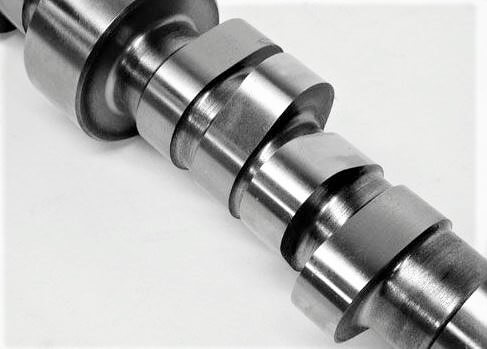
Well Greg… sounds pretty obvious… the timing of a valve varies?… Yep, it’s true but why? Many car companies today are utilizing some type of V.V.T. systems. The reason they do is to squeeze better performance from a smaller engine over a wider variation of conditions. Think of it sort of like the way your body increases blood flow and respiration when you are exercising. Your body adjusts to varying demands on it. The camshaft can be considered “brain” of an internal combustion engine. It determines when a intake or exhaust valve opens in the combustion cycle (timing), how far open it will go (called lift), how long it will stay open (called duration). The cam is important to control how much air and exhaust can pass through the engine at a given speed. And, with every machine design, there are compromises. When the cam is made for maximum power (high lift and long duration), the engine suffers at low sp ... read more
Posted on 8/15/2017

Note: This is the part of a series of articles explaining some of the technical features of newer Honda and Toyota vehicles. We will explain, in plain English, how these highly complex systems work. Feel free to email us at [email protected] if you have any suggestions for things you’d like to learn about! The components of the anti-lock braking system. Image courtesy of Honda of America. The Anti-Lock Braking System, or ABS, has become the cornerstone of modern vehicle safety systems. Unless you’ve just started driving recently, you’ll remember the days when we were taught to “pump the brakes” during a panic stop. But why is that? In older vehicles without ABS, stomping on the brake pedal and holding it down almost always causes the wheels to “lock up” and begin skidding. Of course, when the car is skidding you have very little st ... read more
Posted on 7/18/2017
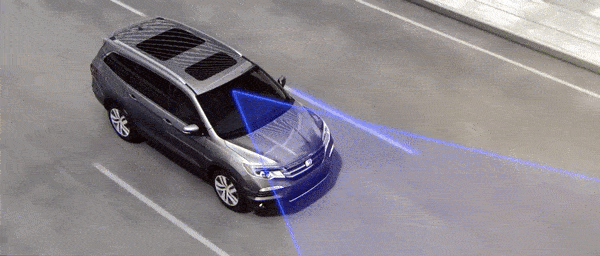
Note: This is the first in a series of articles explaining some of the technical features of newer Honda and Toyota vehicles. We will explain, in plain English, how these highly complex systems work. Feel free to email us at [email protected] if you have any suggestions for things you’d like to learn about! The Lane Departure Warning system alerts you when you drift over a lane line without signaling. Graphic courtesy of Honda. What is it? Lane Departure Warning, or LDW, is part of Honda’s “Sensing Package” (Toyota calls it “Lane Departure Alert“) available on most newer vehicles. The goal of this safety system is to keep you from drifting into another lane. How it works ... read more
Posted on 6/20/2017
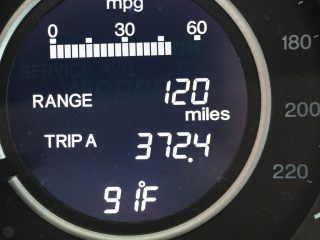
372 Miles Down… 120 to Go…. That works out to a whopping 38 MPG! We all know gas isn’t cheap, so squeezing out a few extra MPG can make a huge difference in your wallet. We recently took a road trip from our home in Silver Spring, Maryland to Asheville, North Carolina for a family reunion of sorts. I checked the tires and fluids on our 2013 CR-V, loaded the back up and hit the road. About eight hours later we arrived, no problems albeit a little tired. We ended up with an average fuel mileage of 32 mpg showing on the information screen. “Not bad”, I thought to myself. I attributed the higher than usual number to my particular “relaxed” driving style and to highway driving. Given my background, I’m very easy on my equipment. The difficult part for this particular trip was the 350 miles traveled down Interstate 81. Not that the road is particularly bad, it’s just the concentrati ... read more
Posted on 6/13/2017
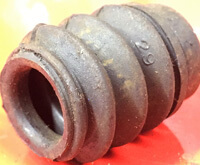
We played “What’s That Wednesday” with this part — it’s a brake caliper slide pin boot! We had so much interest in our “What’s That Wednesday” social media post that we decided to expand on it a bit. The “mystery part” we showed was a brake caliper slide pin boot. But what exactly is that? Cars these days all have disc brakes. The main parts include names like; brake pads, calipers, rotors or discs. The brake caliper is hydraulically operated (essentially by your foot) and is responsible to clamp down on the brake pads to create friction against the rotating brake rotor. The wheel is bolted to the brake rotor. While there are several designs for brake calipers, the most common type is the “floating” caliper. This has two main sections… a bracket (blue in the picture), which solidly mounts to a suspension component. The caliper body (yellow in these pictures), which mus ... read more
Posted on 6/6/2017
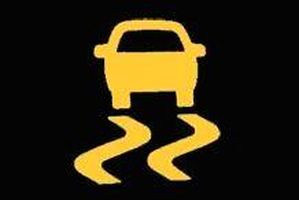
No, this light doesn’t mean snakes are following your car. It’s the indicator for the Traction Control System. To keep the car from losing traction and possibly causing an accident, many cars come with a Traction Control System, or TCS. On-board computers monitor wheel speeds and braking pressures to determine if one or more wheels lose traction. If that happens, the system automatically transfers power to the wheels that are still grabbing the pavement. The TCS also has some control over the engine output to keep an overactive right foot from inadvertently causing loss of control. Both two-wheel drive and all-wheel drive (AWD) vehicles utilize these systems. Some AWD vehicles also have a special mode that locks all four wheels together. This mode is only used at extremely low speeds and is designed to aid in extricating the vehicle from snow, ice, mud, sand, etc. During the starting procedure, the TCS light comes on momentarily as the system activates a self-test. If ... read more
Posted on 5/23/2017
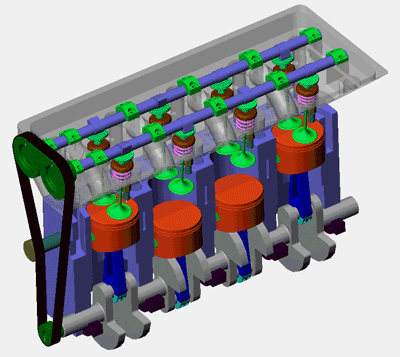
An animation showing a typical 4-cylinder engine. If you click to see the larger version, you’ll see the timing belt on the left side of the engine which synchronizes the crankshaft and camshafts. Four-cycle internal combustion engines use a camshaft to open and close the intake and exhaust valves. This shaft has an egg-shaped cam for each valve that pushes open the intake and exhaust valves in the proper sequence. The camshaft is timed or synchronized with the crankshaft (what the pistons are attached to). In completing the four cycles there are two revolutions of the crankshaft for every revolution of the camshaft. No matter how fast or slow the engine goes, this ratio stays the same. The timing belt governs that ratio. It has rounded “teeth” that engage with sprockets on both the c ... read more
Posted on 5/16/2017
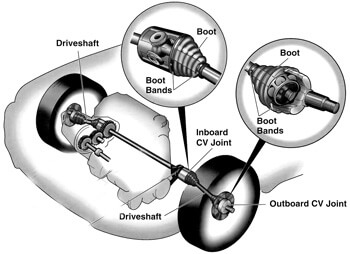
On front and all-wheel drive cars, the axle shafts are what connect the transmission with the wheels, driving the vehicle along. The axles must flex, allowing the suspension to move up and down and the front wheels to turn right and left, while at the same time transmitting the driving force from the engine to the wheels. Drive Axle Diagram A Broken CV Boot The part that simultaneously enables the axle to flex while transmitting the driving force is called a drive axle joint, and is also known as a constant velocity (or CV) joint. The CV Boot is a ribbed, rubber flexible boot that keeps water and dirt out of the joint and the special grease inside the joint. Pictured here is a view of a front, outer CV boot that has torn open. The greasy mass inside is the actual ... read more
Posted on 4/25/2017

When you’re driving, the only thing between you and the road moving past at 60-or-so miles per hour underneath are four small patches of rubber. That’s why your tires are so important to the performance and safety of your vehicle. While tire technology has improved over the years, the basic design hasn’t changed too much in a long time.There are a lot of factors that go into making sure your tires are performing at their best. Here at Motor Works, we check and inspect your tires at each service.Making sure your tires are inflated properly are the first step to making sure they wear evenly and properly over time. Overinflating your tires leads to excessive wear in the center of the tread, while underinflating them will cause wear on the outside edges. Common types of tire wear Often, uneven wear on one edge of the tire indicates a problem with your vehicle’s steering and suspens ... read more
Posted on 4/18/2017
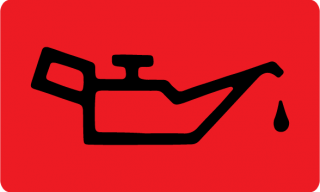
If you see this light while you’re driving STOP. RIGHT. NOW. The oil light is absolutely one of the most important warnings your car can give you. It’s easier to think of your oil warning light as a blood pressure warning. The oil in your car’s engine is just like the blood in your own body. There has to be the right amount at the right pressure. Not enough blood? Blood pressure too low? That makes for a really bad day. It’s the same for your car. If your car’s engine loses oil pressure, the oil warning warning light will come on. Stop the car and shut off the engine right away if this red light comes on. It’s indicating imminent damage to your engine. Running your engine with low oil pressure is just like running it with no oil at all. That kind of damage can get very costly, very quickly. Here’s an important point to make, however. Your car can be low on oil, but still have the correct oil pressure for a time. The oil light is not an indicator of ... read more